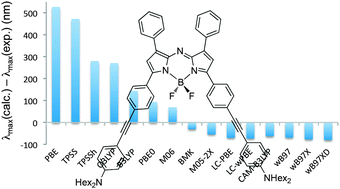The excited-state energies of aza-boron-dipyrromethene (Aza-BODIPY) derivatives are investigated with Time-Dependent Density Functional Theory (TD-DFT), with twin goals. On the one hand, a pragmatic, yet efficient, computational protocol is defined in order to reach rapidly semi-quantitative estimates of the λmax of these challenging dyes. It turned out that a PCM-TD-BMK/6-311+G(2d,p)//PCM-PBE0/6-311G(2d,p) approach delivers appropriate lower bounds of the experimental results, despite the inherent limits of the vertical approximation. On the other hand, the method is applied to design new dyes absorbing in the near-IR. The spectral features of ca. 30 new compounds have been simulated in a systematic way, trying to efficiently combine several available synthetic strategies leading to significant bathochromic displacements. A series of dyes absorbing above 850 nm are proposed, illustrating that (relatively) fast theoretical calculations might be a useful pre-screening step preceding synthesis.

You have access to this article
 Please wait while we load your content...
Something went wrong. Try again?
Please wait while we load your content...
Something went wrong. Try again?


 Please wait while we load your content...
Please wait while we load your content...